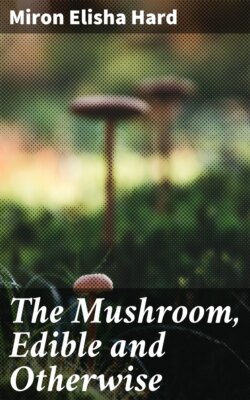Читать книгу The Mushroom, Edible and Otherwise - Miron Elisha Hard - Страница 33
На сайте Литреса книга снята с продажи.
Amanita rubescens. Fr.
ОглавлениеTable of Contents
The Reddish Amanita. Edible.
Figure 27.—Amanita rubescens. One-third natural size, caps a dingy reddish-brown, stains reddish when bruised.
Rubescens is from rubesco, to become red. It is so called because of the dingy reddish color of the entire plant, and also because when the plant is handled or bruised it quickly changes to a reddish color. It is often a large bulky plant and rather uninviting.
The pileus is four to six inches broad, dingy reddish, often becoming pale flesh color, fleshy, oval to convex, then expanded; sprinkled with small pale warts, unequal, mealy, scattered, white, easily separating; margin even, faintly striate, especially in wet weather; flesh soft, white, becoming red when broken.
The gills are white or whitish, free from the stem but reaching it and forming at times decurrent lines upon it, thin, crowded.
The stem is four or five inches long, nearly cylindrical, solid, though inclined to be soft within, tapering from the base up, with a bulbous base which often tapers abruptly below, containing reddish scales, color dull red. It has seldom any distinct evidence of a volva at the base but abundant evidence on the cap. Ring large, superior, white, and fragile.
The plant is quite variable in color, sometimes becoming almost white with a slight reddish or brownish tint. The strong distinguishing character of the species is the almost entire absence of any remains of the volva at the base of the stem. By this, and by the dull red hues and the bruised portions quickly changing to a reddish color, it is easily distinguished from any of the poisonous Amanitas.
According to Cordier it is largely used as an article of food in France. Stevenson and Cooke speak well of it. I noticed the small Bohemian boys gathered it about Salem, Ohio, not having been in this country more than a week and not being able to speak a word of English. It convinced me that it was an article of diet in Bohemia and that our species is similar to theirs. I have found the plants in woods about Bowling Green and Sidney, Ohio. The plants in Figure 27 were collected on Johnson's Island, Sandusky, Ohio, and photographed by Dr. Kellerman. It is found from June to September.
